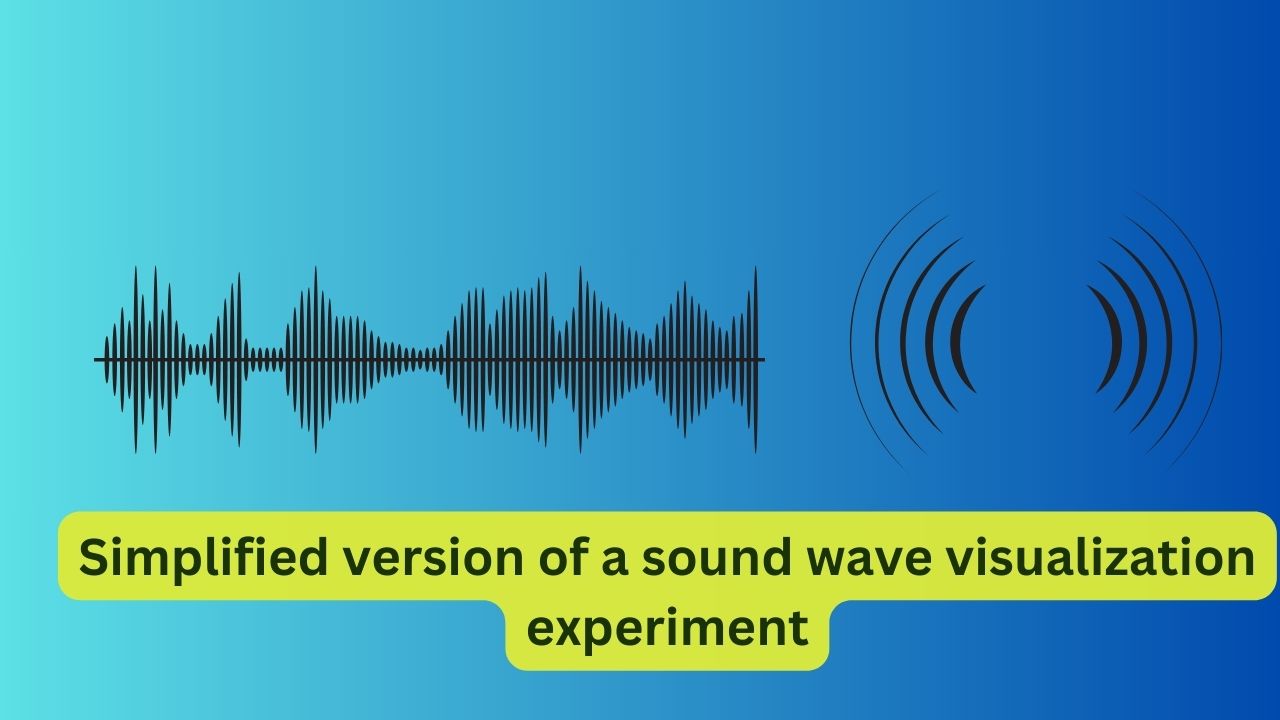Here’s a simplified version of a sound wave visualization experiment suitable for school kids:
Materials Required:
- Tuning fork (preferably one that produces an audible tone like A440)
- Empty plastic bottle or small container
- Water
- Plastic wrap or balloon
- Rubber band
- Smartphone with a slow-motion video recording feature (optional)
- Ruler or measuring tape
- Marker
How to Conduct the Experiment:
- Create a Vibrating Surface:
- Fill the plastic bottle or container with water until it’s about halfway full.
- Stretch the plastic wrap or balloon tightly over the opening of the container and secure it in place with the rubber band. Make sure it’s stretched evenly.
- Strike the Tuning Fork:
- Hold the tuning fork by its handle and gently strike one of its tines against a firm surface, such as the edge of a desk or your knee.
- Place the Tuning Fork Over the Water Surface:
- Hold the vibrating tuning fork close to the surface of the water without touching it.
- Observe the Ripples:
- Watch as the sound waves from the tuning fork cause ripples to form on the surface of the water.
- You can also try recording the experiment with a smartphone using the slow-motion video feature to capture the movement of the ripples more clearly.
- Measure and Record:
- Use a ruler or measuring tape to measure the distance between consecutive crests (peaks) or troughs (valleys) of the ripples.
- Record your measurements and observations in a notebook or on a piece of paper.
Learning Outcomes:
- Understanding Sound Waves: Kids will observe how sound waves produced by the tuning fork create visible ripples on the water surface, demonstrating the concept of sound energy transfer.
- Visualization Skills: They will learn to visually identify the pattern of waves and understand how it corresponds to the vibrations produced by the tuning fork.
- Hands-On Experience: By actively participating in the experiment, kids will engage with the scientific process and develop a curiosity for exploring the natural world.
- Simple Data Collection: They will practice basic measurement skills by using a ruler to measure the distance between ripples, fostering an understanding of quantitative observation.
- Fun and Interactive Learning: This experiment provides a fun and interactive way for kids to learn about sound waves, encouraging them to ask questions and explore further.
By conducting this experiment, school kids can gain a hands-on understanding of sound waves in a simple and engaging manner.


No responses yet